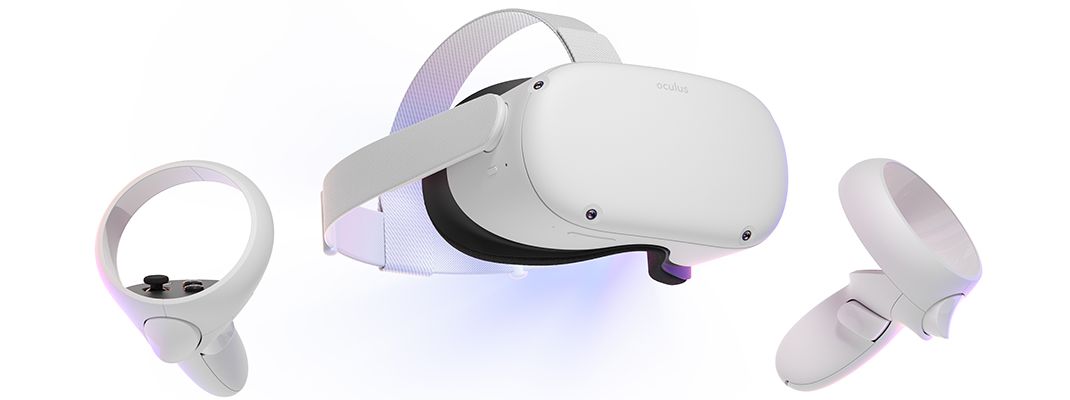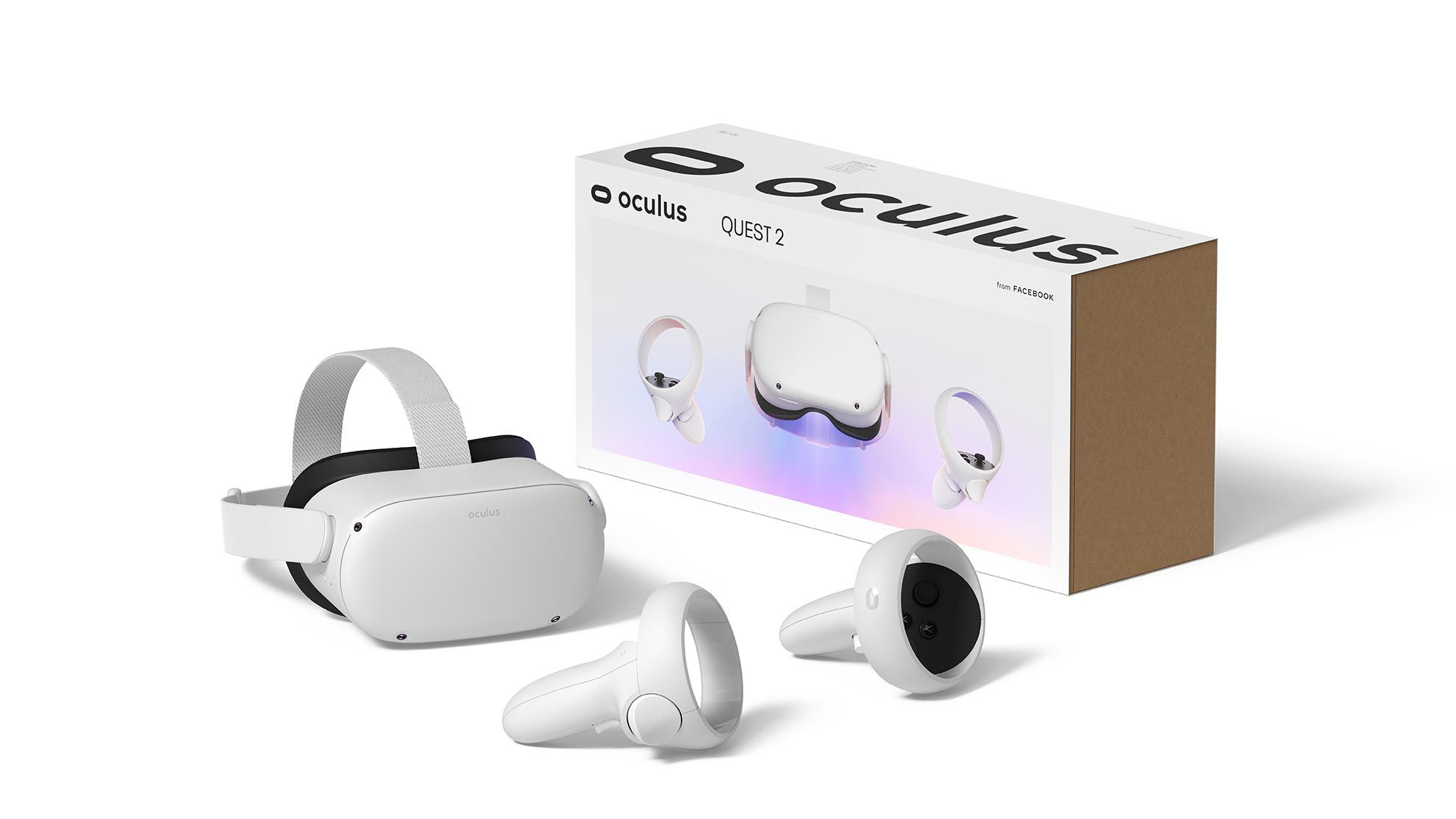VR has had a long and bumpy road, starting from the 90s through today. The dream of what it could do was bigger than the tech of the day could provide, but slowly those limitations fell away until it was practical. The first Oculus Rift developer kits before its official release highlighted issues nobody ever expected to run into such as motion sickness, and being tethered to a physical chunk of hardware is less than ideal. Iteration and experience helped sort out the motion sickness problem, although how much so is always down to the individual using VR, but the tether only began to get solved with the release of the Oculus Quest. The Quest was nice but also the first iteration of a new branch of VR, noticeably less powerful than its PC-linked siblings but with the freedom to play and share much more easily. That was almost a year and a half ago, which is a short period of time by console generations but more than enough to realize that the Quest is a popular, successful product and could use a brush-up to reach its potential. The Quest 2 may not be a revolution in design, but it's a strong upgrade and a little more capable of going toe-to-toe with headsets backed up by PC muscle.
There's no question there will be tradeoffs, of course. Nobody's expecting a device that packs all its hardware between the lenses and the front of the headset to provide the fancy effects of a GeForce 2080, much less the newest and latest graphic cards, but that's OK because it's not the fight the Quest 2 is designed for. What it wants to be is an all-in-one VR solution, one that works at home and on the go, able to provide a perfectly good experience by itself, or with the not-included USB-C link cable, act as a standard tethered headset. While that latter option isn't fully complete yet, the rest works nicely.
Before really diving in, though, it's worth noting the big Nope that's going to drive away a certain segment of the audience, and that's Facebook. Since the launch of the Rift back in 2016, Oculus and Facebook might as well have been two separate companies. That recently changed, and in order to keep using Oculus hardware, you'll need to link it to a Facebook account. If you've got a Facebook profile then this is merely annoying, yet another way that that the user becomes the product. If you don't have or want a Facebook profile then the annoyance turns into an actual problem, because it needs to be a real account and can potentially lose access to the entire library if Facebook decides it's fake. A Facebook ban means an Oculus ban too, not quite bricking the hardware but close enough. If this is unacceptable to you then, understandably, the Quest 2 or any other Oculus hardware is just a bad idea. There's no question the requirement and its potential consequences are a worrying look at the digitial-dystopian future and walking away is a perfectly reasonable response.
Having said that, I've been having a great time with the Quest 2 and have found it reinvigorating my appreciation for VR. Part of this is because I never had the original Quest so the difference in usage sounded nice in an abstract way, but actually getting to play with one shows that the system redefines how this odd little branch of gaming should work. For the standard Rift the process is fire up the Oculus program, put on the headset, shove the connecting cable out of the way, clear out the initial welcome-to-Oculus-type notification that I've seen so many times I honestly have no idea what it says any more, start loading a game from the Steam/Epic/Oculus/wherever storefront, kick the computer chair out of the way in the few seconds it takes to load and finally get to playing. This can be kind of a lot, and the biggest advantage of the Quest is getting rid of most of those steps. Putting on the headset automatically wakes it from sleep mode, and seeing as it's a self-contained unit designed only for one thing it loads straight into the menu system. Hit the library, choose a game, load it up, start playing. It's amazing how much more accessible that makes VR.
The lack of tether also brings several other advantages with it. If you've got the space the play area can be bigger, for example, no longer constrained by where the cord can reach. Setting a play-area boundary is as simple as drawing a few lines on the floor, with the cameras built into the headset giving a fuzzy black-and-white view of your surroundings while doing it. The play area can be anywhere there's space, and while the safety warnings advise against outside usage, it's nice not to have to worry about hitting the ceiling so long as you've got a friend around to keep an eye on potential hazards. Being able to use it anywhere also makes the Quest 2 an enjoyably social device, especially if you can enable WiFi streaming so others can see your view on an external monitor. It's easiest to do this on a phone with the Oculus app installed, but most streaming-enabled devices like Chromecast should cover this.
All this was present in the original Quest but what sets Quest 2 apart is its shiny new processor, which is an upgrade from the old Qualcomm Snapdragon 835 to the new Qualcomm Snapdragon XR2 (which is a collection of letters and numbers that means absolutely nothing to most people). The primary thing to note is that the XR2 is newer and built custom for VR, rather than being an all-purpose workhorse like the older 835. Some of that power will be soaked up by the per-eye resolution, which comes in at 1832 x 1920 instead of the Quest's 1440 x 1600, putting it comfortably ahead not just of its predecessor but also the resolution of the Oculus Rift S. It's crisper and makes small text actually readable, which is honestly something of a relief. There's a bit of a trade-off, though, in that the original quest used a lovely OLED display for better colors and deeper blacks, but it's a trade-off for the new fast-switching LCD panels that, as the name implies, are good at the frames-per-second. The high framerate and resolution combine with more densely-packed pixels to create a fantastic display overall.
While pumping out the pixels on the new screen may eat up a bit of the XR2's power, there's no way to say yet how strong its real-world effects will be. The Quest 2 is fully backwards-compatible with the original Quest's library, and while a few games like Arizona Sunshine and SuperHot have come out with enhanced versions, it's still very early days, and most games look the same as they always have. It's a work in progress, as are a few other features such as the link cable. The Quest 2 has a screen that runs at a perky 90hz, same as the original Rift CV1, but its link cable to run PC games is still limited to 72hz for the moment. Oculus/Facebook promises that this will be addressed shortly after launch and it's something to look forward to, but like games optimized for the Quest 2's power it's an expectation that will have to go on the back burner for now. On the plus side, the library is strong and growing, even if it's a bit of a walled garden.
Thankfully the walls are low and easily breached. Going from zero experience to sideloading took an hour of research and experimenting, and then a bit longer when I accidentally breezed over a step, but soon enough I was playing the Quest version of the excellent To The Top. This is great for developers that had the time and budget to enable a side-loading version (or program with an expectation of platform availability that doesn't end up being met), but I also talked to people who are stranded on the Oculus PC store with no access to release on the Quest. Without those sales to justify the development time there just isn't a whole lot of point. Developing games for sideloading is more a hobbyist thing, but there are some fun games and utilities out there to track down.
Even inside the walls it's a great library, though, and I've been playing a ton of games all worth losing hours to while testing out the new system. Whether it's the lovely mellow block-puzzles of Cubism, the classic musical shooting of Rez, guaranteed party-pleaser Beat Saber or the enchanting storybook of A Fisherman's Tale, there's a huge variety of gaming waiting in the storefront. I'd have more of an opinion on Until You Fall except I've been careful of that one since punching the ceiling light, and I know that Space Channel 5: Kinda Funky News Flash turned out less than hoped, but I'm still looking forward to seeing Ulala when I've got a spare hour. Upcoming games like The Climb 2 or Warhammer VR: Battle Sister promise that the post-launch period will have plenty to do as well. There's a lot here and even more to look forward to.
There are a handful of mechanical issues, though, that are worth taking into account, and they feel like a result of cost-cutting measures to keep the price down. First up is the head strap, which is basically exactly what it sounds like: a couple of pieces of fabric. The one going over the head has the familiar Velcro fastener to let you adjust the height of the Quest 2 on your face, while the stretchy ribbon going around the back is just barely adequate for securing things in place. It's easily removable but an extra expense to replace, but at least it can be replaced unlike the lenses. While I'm happy to find out that my eye-width falls within the normal range, there are a total of three preset widths that the lenses can click into, and if your eyes don't fit then the image will be slightly but perpetually out of focus. It feels like a corporate decision, calculating the dollar to user ratio and sticking with the most common three rather than adapting the original Rift's much more flexible lens-spacing system. If you suspect your interpupillary distance falls outside of 58-68 millimeters it's probably best to try before you buy. Anywhere in between will work fine, though, and if your eyes are at a half-step between one setting and the next the lenses seem happy to hold their position even when not clicked into place.
Closing Comments:
The Oculus Quest 2 is an evolution of VR, pushing forward incrementally rather than being a generational leap. It's a solid increment, though, with strong tech in a lightweight body, and most importantly it's a lot of fun to use. A dedicated piece of hardware that activates just by putting it on simplifies VR usage no end, and its self-contained nature makes the Quest 2 easy to toss in a bag and take on the go. The nature of VR is exclusionary, in that the person in the headset gets everything while those outside are almost in a different world, but even so the "bring it along to share" nature makes it a far more social experience than before. It doesn't hurt that VR is almost always a show-stopper, and the library has matured enough that it can offer titles ranging from the most beautiful Tetris ever to military sniper action, silly anime broom-racing witches, classic arcade action, big-budget movie licensing and a world of content in between. The Quest 2 is the new standard for standalone VR and does a good job doubling up on the PC-based unit as well, and while it's not a completely disclaimer-free experience, the system still moves the tech forward to an admiral degree.



